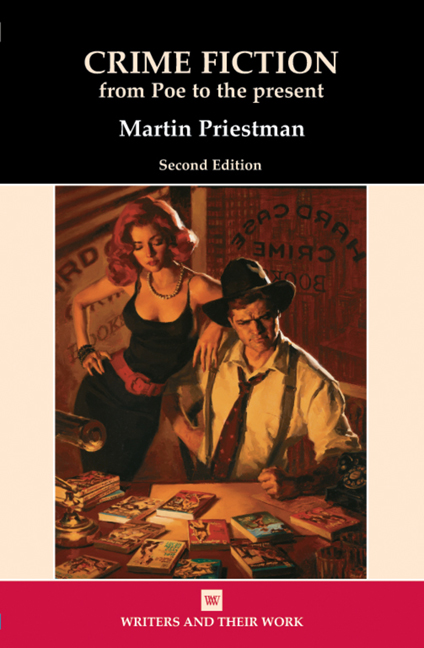Book contents
- Frontmatter
- Contents
- Acknowledgements
- A Chronology
- Introduction
- 1 The Detective Whodunnit from Poe to the First World War
- 2 The Detective Whodunnit from Christie to the Present
- 3 The Noir Thriller
- 4 The Hero-Thriller
- 5 Private Eyes: The Detective Thriller
- 6 Serial-killer Fiction and Other Developments
- Conclusion
- Notes
- Select Bibliography
- Index
Conclusion
- Frontmatter
- Contents
- Acknowledgements
- A Chronology
- Introduction
- 1 The Detective Whodunnit from Poe to the First World War
- 2 The Detective Whodunnit from Christie to the Present
- 3 The Noir Thriller
- 4 The Hero-Thriller
- 5 Private Eyes: The Detective Thriller
- 6 Serial-killer Fiction and Other Developments
- Conclusion
- Notes
- Select Bibliography
- Index
Summary
This book has tried to clarify the confused cross-currents within an immensely popular, still-developing genre, by stressing some basic formal distinctions. This has led to some sacrifices in terms of chronology and geographical coherence: rather than following in strict succession, the various forms considered often overlap chronologically, as well as interweaving the different British and American trajectories which another study might have separated more fully. I have aimed to clarify the necessary distinctions and continuities, and – though many popular and/ or significant writers have had to be omitted in such a brief study – I have tried to draw at least a basic map on which their works might be placed.
Given the series-title ‘Writers and their Work’ the emphasis has naturally been on written fiction; however, no discussion of the crime genre can completely omit mentioning its numerous screen manifestations. The work of almost every writer discussed in this book has at some point been adapted for film or TV: whole styles of film-making have been derived from the James Bond franchise or the classic Huston and Hawkes versions of Hammett and Chandler, while British TV's long drama-series tradition depends evermore exclusively on adapted whodunnits ranging from Doyle and Christie to the latest regional inspector to hit the bookshelves. Less dependent on literary sources, American TV has reworked the structural basics of the procedural and noir thriller in such long-running series as The Wire and The Sopranos, widely acclaimed as some of the best television ever made. Hence, more than with other genres, most readers’ actual experience of the crime genre is probably made up of something of a mish-mash of written and screened versions of the same motifs and – often – heroes. But although a longer book might have tried to survey this broader picture, I hope this one has been useful in disentangling the main written strands from the much-changed versions, in which readers will have first encountered some of them on the large or small screen.
In both its screened and written forms, crime fiction has an inbuilt tendency to present itself as modern and cutting-edge. This manifests itself in the kinds of crime presented – often based on recently reported cases combining ‘the shock of the new’ with real anxieties about social collapse – but also in the presentation of technology.
- Type
- Chapter
- Information
- Crime Fictionfrom Poe to the present, pp. 75 - 77Publisher: Liverpool University PressPrint publication year: 2013

